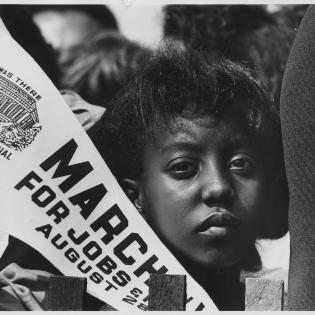Rallying to the Cause
Young people read about the talents and interests of people who took action for the common good during the Civil War and Reconstruction. The youth identify some of their own talents and match them to nonprofit organizations they can support today.
The learner will:
- define the traits of volunteers during the Civil War and Reconstruction.
- identify their own intersecting talents and traits and match them with local nonprofits.
- copies of Brief Biographies (one bio per group)
- copies of Talented Who? for each participant
Preview the Open Doors to Your Community resource before using it as a guide for young people to contact a local nonprofit. Determine what permissions may be needed before young people call or email a local nonprofit to learn more.
Instructions
Anticipatory Set:
Every person is made up of intersecting characteristics, privileges, hardships, and motivations. We cannot judge or define a person by one trait. Many people in history are known today for only one thing even though they are complex people.
To explore our own intersecting traits, use the Talented Who? handout below to guide the participants to name some of their talents, traits, and motivations. These can help us understand what our own contributions to the world may be. Discuss what they identified with the following question:
How can you use your talents to address a need in the world today?
Ask, "What is a volunteer?" (one who performs a service or good work for others without pay)
Assign groups to read about people who volunteered around the Civil War years on the Brief Biographies handout and prepare to teach the other groups about their person. They take notes on their individual related to their volunteering, values, talents, and the impact of their work.
Bring the groups back together for brief presentations on the individuals. They share the person's talents and values, their volunteer action, and the impact of their work.
Discuss what they think is the role of volunteering in historic changes.
Share the link to Learning to Give's Open Doors to Your Community guides to learn about nonprofits today taking action to address needs. One of the guides may spark them to contact a local nonprofit and ask three questions: What does your organization do? What need does it address? and What can young people do to help? They follow the directions in the activity to set up a volunteer opportunity.
Note: Talk about the importance of choice in volunteering. They may come to a consensus to all volunteer at one place in the community, or they may choose different opportunities that match their interests and talents.
Handouts
Philanthropy Framework
-
Strand PHIL.II Philanthropy and Civil Society
-
Standard PCS 01. Self, citizenship, and society
-
Benchmark MS.4 Describe the characteristics of someone who helps others.
-
-
Standard PCS 05. Philanthropy and Government
-
Benchmark MS.10 Give historic and contemporary examples of a voluntary action by an individual or a private organization that has helped to enhance a fundamental democratic principle.
-
-
-
Strand PHIL.III Philanthropy and the Individual
-
Standard PI 01. Reasons for Individual Philanthropy
-
Benchmark MS.5 Describe the responsibility students have to act in the civil society sector to improve the common good.
-
-
-
Strand PHIL.IV Volunteering and Service
-
Standard VS 02. Service and Learning
-
Benchmark MS.1 Select a service project based on interests, abilities and research.
-
-
Standard VS 03. Providing Service
-
Benchmark MS.1 Provide a needed service.
-
-
